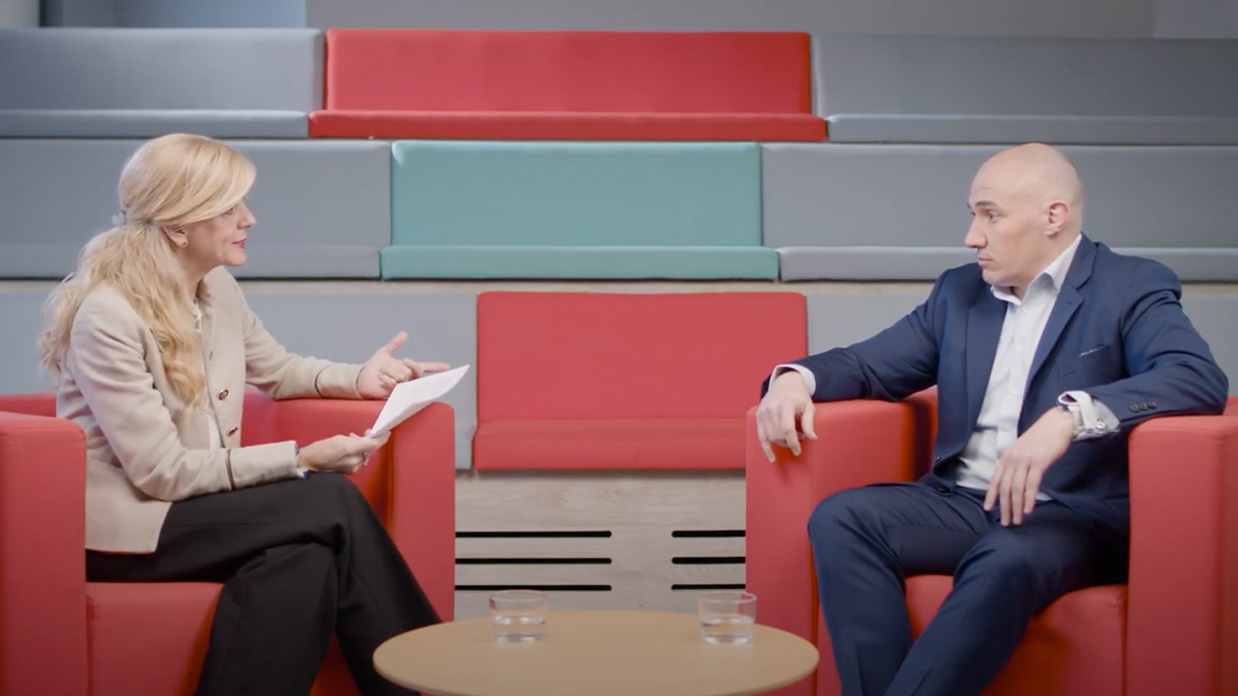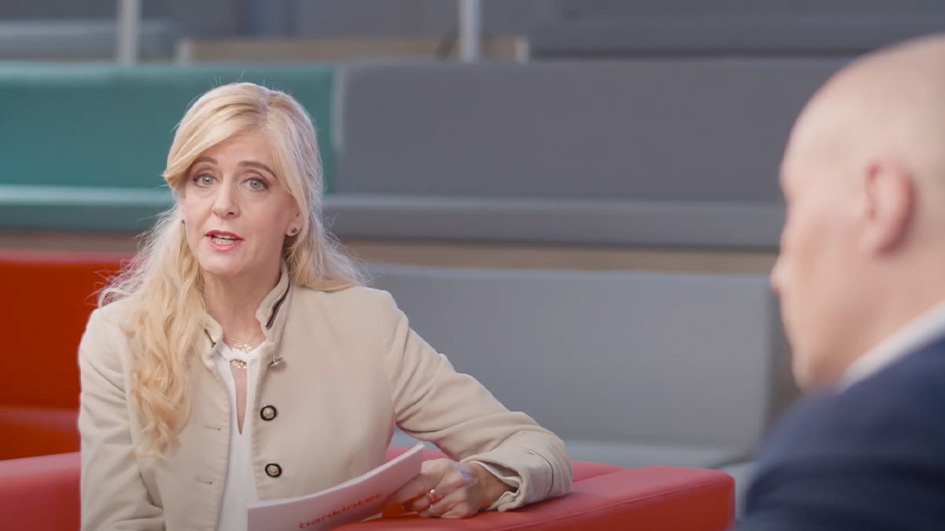We use first and third-party cookies for analytical and statistical purposes and to show you personalised advertisements based on a profile compiled from your browsing habits (e.g. pages visited). For more information, click on our Cookie Policy. You can accept all cookies by pressing 'Accept', you can reject all cookies by pressing 'Reject', or you can customize your choice by pressing 'Manage'.

The green triennium of European funds: three PERTEs for the energy transition.
In 2024 new calls with a generous financial endowment will be launched to accelerate the energy transition of heavy industry and manufacturing and transform the sectors most committed to the circular economy.
Here at Bankinter we are holding a series of interviews with experts from the consulting firm FI Group to analyse the most imminent opportunities and the calls that are either still open or are pending resolution. Emma Montserrat, head of European Funds and deputy assistant managing director at Bankinter, talks with Daniel Ramos, green leader at FI Group, about the three PERTEs that revolve around sustainability and the energy transition: Renewable Energies, Decarbonisation and Circular Economy.

Emma Montserrat: Daniel, let's start by talking about the PERTE for Renewable Energies, Green Hydrogen and Storage, known here in Spain as the ERHA. This is one of the projects that has distributed the most aid. It is also undoubtedly one of the most cross-cutting projects. How many lines are still open and what calls are expected for 2024?
Daniel Ramos: the truth is that the Renewable Energies PERTE has a different configuration from the other PERTEs. It is made up of a group of calls that are divided into different phases of technology maturity: from R&D to technological development and the implementation of investment projects. Recent years have seen different calls launched, some of them very successful because they have been well received by the industries concerned and all the funds have been drawn down.
As of today, some of the calls from 2023 are still pending resolution. This is the case, for example, of the renewable hydrogen value chain and the new business models for the energy transition. Other calls have been open for years and are aimed at the end user, such as self-consumption and thermal renewables. And then there are the calls expected for 2024, which are more focused on the investment and development of major projects.
Within these calls, we are expect one that we have been talking about for a long time, namely the great Green Hydrogen Valleys. A significant amount of 1.6 billion euros of the addendum are allocated to this call. The aim is to develop large hubs of consumption, production and general stakeholderswhere hydrogen will play a decisive role in the decarbonisation of large industrial areas as well as in heavy transport and in public administration.
We also have calls for innovative technologies, such as the ones for the new energy transition business model where the aim is to improve the technologies that have already been implemented, and the stand-alone storage technologies, especially in just transition nodes (affected by the closure of thermal or nuclear power plants).
Emma Montserrat: this year the Circular Economy PERTE will receive an additional 600 million euros and will be highly focused on the plastic, textile and capital goods industry for renewable energies. How can corporates benefit from these sectors? What is the current status of these calls?
Daniel Ramos: we have already had a first call for the Circular Economy PERTE. This PERTEis unusual in that it is divided into three priority sectors but there is also a more cross-cutting line that has already been executed and admitted projects from non-priority sectors. We are now waiting for the new calls to be announced after the public consultations of the last few months.
What projects are eligible for funding in this Circular Economy PERTE? There are several types, but they are all closely aligned with the Green Deal objectives and the decarbonisation of industry in general. We will be able to submit ecodesign projects, in a phase now open to more R&D, projects related to the replacement of more contaminating commodities with others that are more sustainable, or even recovered and recycled, and also industrial symbiosis projects where waste from one industry can be used, for example, as commodities for another industry.
Within the general lines of these projects, the aim is to encourage cooperation to promote the decarbonisation of industry in the circular economy. This is one of the key projects at the country level because, like renewable energies, it promotes energy independence. We are not just facing an energy crisis but a commodities one as well, and the circular economy allows for more independence regarding the commodities that are critical for the energy transition.
Emma Montserrat: talking about industrial decarbonisation, there is a specific PERTE for the manufacturing sector where the energy transition is much more expensive and complicated. How will it develop in 2024?
Daniel Ramos: the first call was launched on 24 January. This is one of the great opportunities that heavy industry has been waiting for the longest. These projects are likely to have an enormous importance for sectors such as cement, steel and paper, etc., which need to cut emissions by 3,000 tonnes of CO2 equivalent. This means that these projects will be extremely large-scale.
This first PERTE line – and we expect a second one to be launched – is endowed with 1 billion euros, 500 million in non-refundable subsidies and 500 million in loans. The line is now open and has already received a large number of projects. The unusual thing about this line is that it is on a first come, first served basis.
These industries work on large-scale projects with major investments and very specific objectives, where in the past grants have sometimes been too small. Industrial decarbonisation and reducing the carbon footprint are increasingly important. For corporates, this strategy affects their emissions trading and the information they have to give to their stakeholders.
Emma Montserrat: what are the keys to success in the calls for these three PERTE? We have three years of experience and the truth is that FI Group has had 100% success in many of these calls.
Daniel Ramos: there is something quite obvious, which is anticipation. This gives you more time and your projects will have a better chance of success. Corporates also have to look for mature projects. This maturity is increasingly important and is evaluated. There are specific evaluation criteria that refer to technological maturity, the maturity of the project's financial model and the maturity of the consortium that can be formed to develop it. For example, the pioneers of green hydrogen line asks for memoranda of understanding for the purchase and sale of hydrogen and electricity, all of which takes time to put together. Winning projects combine all the factors.
Emma Montserrat: you have explained what will happen in 2024, but most of these projects are very complex to develop and will be executed over the next three years. What opportunities will there be in the medium term or is this the last great opportunity?
Daniel Ramos: it's true that for structural funds, in this case the Next Generation funds, we always use the N+3 rule. Based on the end date for the 2023 calls, we have three more years to execute the funds. Here it depends on the different calls: some allow 12 months for the execution of projects, others 24 and some even 36 months. So we have to bear in mind the call time frames.
During that time, corporates may be able to access other financing tools. For instance, some calls are permanently open, or in other cases the addendum has extended the time frame for development. Even more money has been allocated for self-consumption and thermal renewables, but it is also true that we have untouched structural funds, such as the EDRF and EAFRD (European rural development funds). Previously, these were the usual funding structures but they have been cast aside somewhat with the arrival of the NextGen funds.
We are hoping that new calls and tools will be launched. For example, a recent publication from the European Commission has just arrived authorising 1.1 billion euros for Spain to develop energy transition products, such as electrolysers, heat pumps, wind turbine blades and photovoltaic panels.


